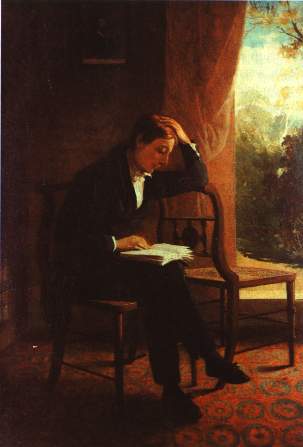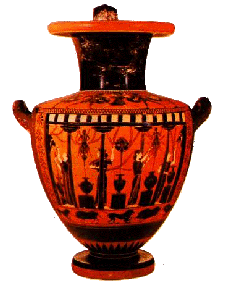Keats' Odes and Negative Capability
Characteristics of the Ode
- a single, unified strain of exalted lyrical verse
- tends to focus on one purpose and theme
- its tone and manner is typically elaborate, dignified, and imaginative
- There are three types of Odes in English: 1) the Pindaric or Regular ode; 2) the Horatian or Homostrophic; and 3) the Irregular.
- The Pindaric is characterized by a three strophe pattern of strophe, antistrophe, and epode. Each new three strophe pattern repeats the meter and rhyme scheme of the first set.
- The Horatian has only one stanza type.
- The Irregular has no consistent stanza pattern.
- Keats' odes tend to be ten-line stanzas in iambic pentameter with a rhyme scheme of ababcdecde. On the basis of this, one could argue that Keats is broadly Horatian.

Keats' Theory of Negative Capability
Keats contends:
The excellence of every Art is its intensity, capable of making all disagreeables evaporate, from their being in close relationship with beauty & truth [. . .] I mean Negative Capability, that is when man is capable of being in uncertainties, Mysteries, doubts, without any irritable reaching after fact & reason [. . .] with a great poet the sense of Beauty overcomes every other consideration, or rather obliterates all consideration.
[letter from Keats to his brother George on 21, 27 (?) December 1817]

- Imagination communicates an intense emotion.
- The poet gives up personal identity to focus on the object being described.
- As a result, the object becomes symbolic of these intense emotions.
- And all other matters not important to this emotion are sidelined.
- The poem's beauty/truth is a combination of poetic emotion and perceived object.
- These leaves open the enjoyment of mystery because the poem is a subjective truth.
For Keats, then, the urn in "Ode to a Grecian Urn," is an object that speaks truth and beauty, but that truth and beauty are understood by the negative capability of the artist. The urn's message is one that is finally open-ended and mysterious.
